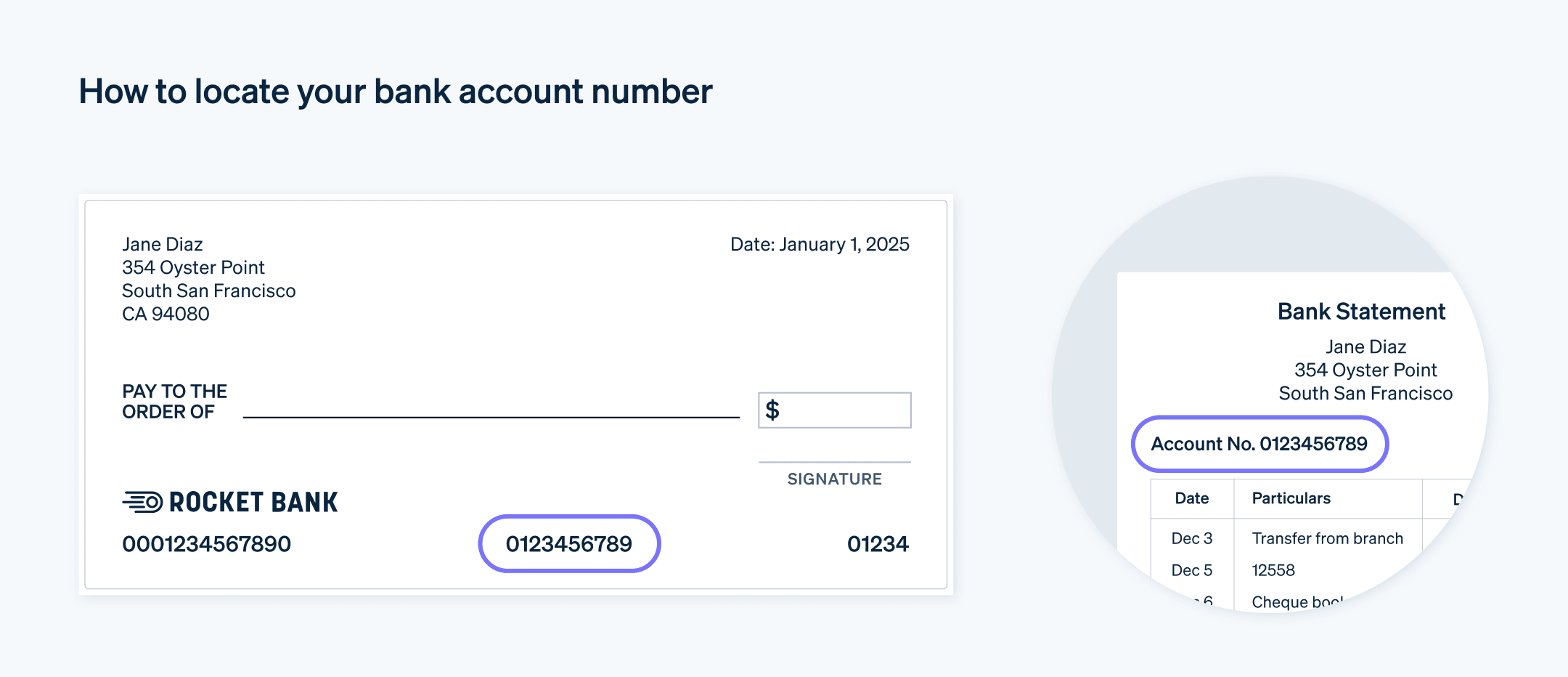银行账号是分配给特定银行账户的唯一标识符。账户号码的长度和格式可能因金融机构或服务而异。在金融交易中,您的账号类似于您的指纹,用于确认您的身份,以便进行交易和账户更新。
根据世界银行最近的调查,2021 年全球 76% 的成年人在银行或受监管机构拥有账户。本指南将介绍企业需要了解的账号信息,以及它们在金融环境中的运作方式。
目录
- 账号的用途
- 如何查找您的账号
- 路径号码与账号的区别
账号的用途
银行账号用于识别银行或金融机构内的个人账户。通常由 8 到 12 位数字组成,它们用于金融交易,以确保资金正确存入或扣除相应账户。账号用于促进存款、取款、电子资金转账 (EFT)、直接存款、电汇和自动账单支付。此外,账号还用于账户管理,使客户和银行员工能够访问账户信息、余额和交易记录。
如何查找您的账号

银行对账单: 无论是纸质还是电子版银行对账单,都应包含银行账号。您可以在“账户详情”部分或文件顶部的账户持有人信息处找到。
支票: 如果您有支票簿,账号通常印在每张支票的底部。它是位于路径账号和支票号码之间的第二组数字。
在线银行: 账号可以在网上银行账户中找到,您可以通过网站或手机应用访问。账号通常显示在“账户详情”、“账户摘要”或“个人设置”中。
银行卡: 在某些情况下,银行发行的借记卡上可能会印有账号。但通常,借记卡上显示的卡号与账号不同。
银行网点或客户服务: 如果您无法通过上述方法找到您的账号,可以前往当地银行网点或联系客户服务。他们可以在核实您的身份后提供您的账号。
路径号码与账号的区别
路径号码
路径账号是一个 9 位数字代码,用于识别美国的特定金融机构或银行分行。它也被称为美国银行家协会 (ABA) 路径账号。
路径账号用于确认金融交易(如直接存款、电汇、支票和自动清算所 (ACH) 转账)涉及的银行和分行。同一家银行可能拥有多个路径账号,这取决于其规模、位置和特定服务。
账号
账号是金融机构分配给特定账户的唯一标识符。它用于区分同一银行或分行内的不同账户。账号的长度和格式因银行或机构不同而有所不同。
账号用于跟踪和管理个人账户。在资金转账等金融交易中,账号用于标识资金应存入或扣除的具体账户。路径账号用于识别金融机构,而账号用于识别该机构内的特定账户。金融交易通常需要同时提供这两个号码,以确保资金正确转账。
本文中的内容仅供一般信息和教育目的,不应被解释为法律或税务建议。Stripe 不保证或担保文章中信息的准确性、完整性、充分性或时效性。您应该寻求在您的司法管辖区获得执业许可的合格律师或会计师的建议,以就您的特定情况提供建议。